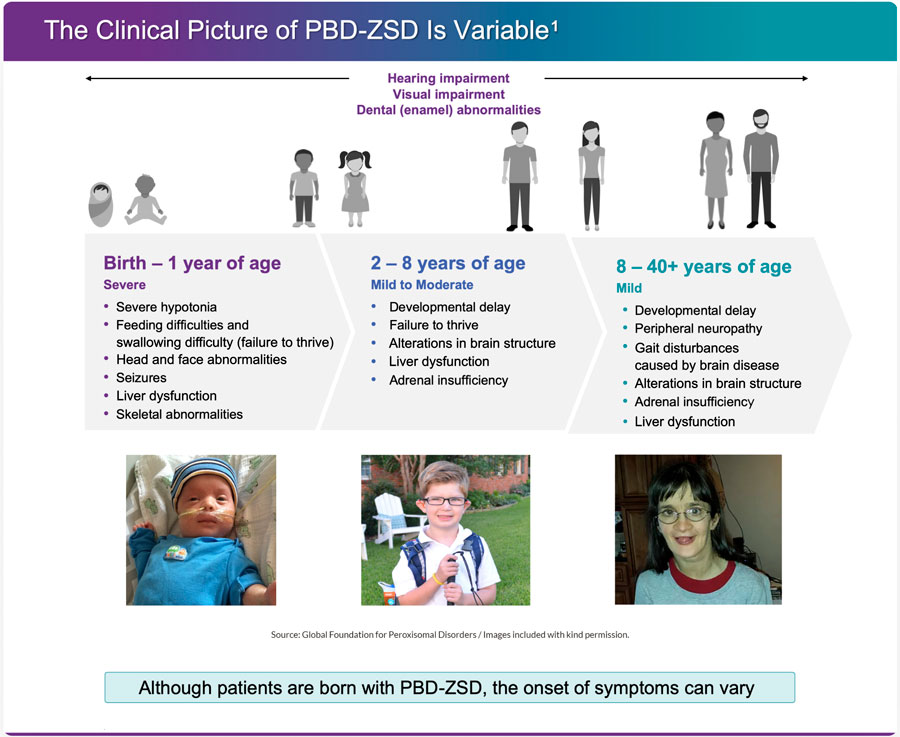About PBD-ZSD

- PBD-ZSD comprises a heterogeneous group of autosomal recessive disorders characterized by a defect in peroxisome formation, affecting multiple metabolic and biosynthetic processes.1
- In the United States, it is estimated that PBD-ZSD occurs in 1 in
50,000 to 1 in 75,000 live births.2 This rate may be underestimated because not all children with PBD-ZSD have the same symptoms, making PBD-ZSD hard to recognize and diagnose.3 - Some children with PBD-ZSD have severe symptoms that are identified soon after birth. These include weak muscle tone (also called hypotonia); difficulties with feeding; problems with vision and hearing; and seizures. Children with PBD-ZSD may also have bone abnormalities (including a large soft space between the bones of the skull) and distinctive facial features (which may include a high forehead or a broad nasal bridge and some forehead involvement).3,4
- Other children with PBD-ZSD show milder symptoms that may not be easily recognized as PBD-ZSD. These children or adolescents often have growth and developmental delays, altered liver function, adrenal insufficiency, kidney stones, dental issues, and some degree of intellectual disability.1,3
- Early medical evaluation is important to recognize the signs and symptoms of PBD-ZSD and begin supportive treatments that might help slow the disease.
References: 1. Klouwer FC, et al. Orphanet J Rare Dis. 2015;10:151. 2. Zellweger spectrum disorders. National Organization for Rare Disorders. Updated August 18, 2020. Accessed October 9, 2023. https://rarediseases.org/rare-diseases/zellweger-spectrum-disorders/ 3. Braverman NE, et al. Mol Genet Metab. 2016;117(3):313-321. 4. Steinberg SJ et al. GeneReviews® [Internet]. Seattle (WA): University of Washington, Seattle; 1993-2019. Accessed: January 11, 2019. http://www.ncbi.nlm.nih.gov/books/NBK1448/

